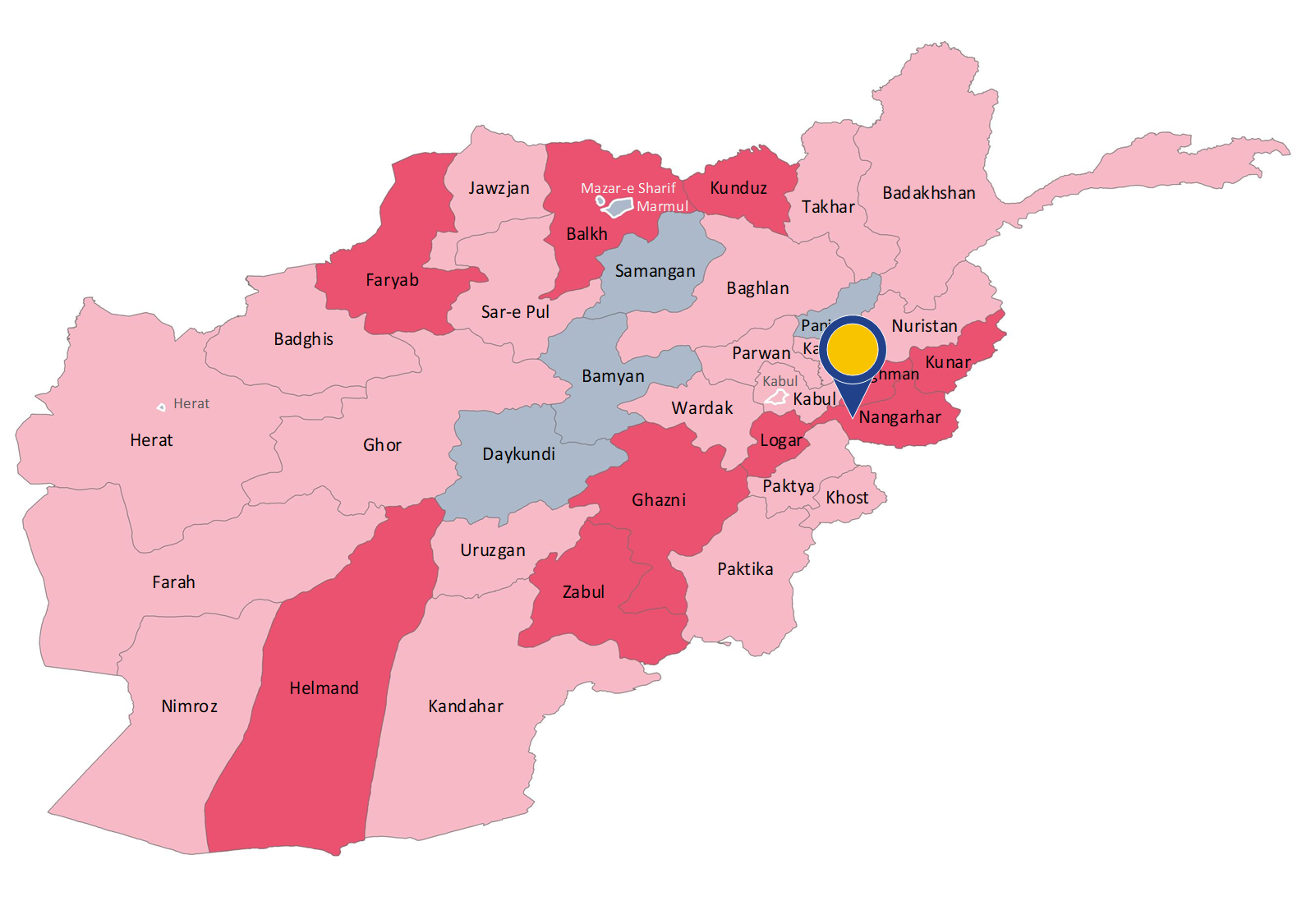|
⚠ |
|
Please note that this country guidance document has been replaced by a more recent one. The latest versions of country guidance documents are available at /country-guidance. |
Nangarhar province has a population of approximately 1 702 000. The main ethnic groups are Pashtuns, Pashai, Arabs and Tajiks. It is located in eastern Afghanistan, on the Afghan-Pakistani border and has served as an unofficial crossing-point for local and foreign militias. Nangarhar borders the provinces of Laghman, Kunar, Logar and Kabul, and shares an international border with Pakistan. Asian Highway AH-1 passes through the province and reaches the Afghan-Pakistani border. The province is divided into 22 districts.

The insurgency in Nangarhar is fragmented, undermined by internal power struggles, with commanders and fighters involved in criminal activities. Examples of the various Afghan and foreign groups present in the province include the Taliban, Hezb-e Islami, as well as Salafi groups, and foreign groups, such as Al Qaeda, Lashkar-e Islam, Tehrik-e Taliban Pakistan and splinter groups of the latter. Although Nangarhar was still described as an ISKP stronghold by February 2019, from the fall of 2019, military operations simultaneously led by ANSF and coalition forces, and operations by the Taliban, pressured the group into leaving the areas under its control in southern Nangarhar and in Kunar. Inter-tribal fighting was also reported. The Taliban were able to consolidate their presence in areas that they cleared from ISKP and thus were the strongest armed group in Nangarhar.
Seven districts within the province were categorised by LWJ as contested, ten districts were under government control or undetermined, and five districts were considered under Taliban control.
ACLED collected data on 705 violent events in the period from 1 March 2019 to 30 June 2020 (average of 10.1 incidents per week), of which 387 were coded as ‘battles’, 293 as ‘explosions/remote violence’ and 25 as ‘violence against civilians’.
Examples of incidents include a number of airstrikes carried out by pro-government forces against ISKP and the Taliban, clashes between the Taliban and ISKP, and suicide attacks against civilian targets by insurgents.
Further impact on the civilian population included, for example, the closure of health clinics and violence against humanitarian personnel or facilities.
UNAMA reported 1 070 civilian casualties (356 deaths and 714 injured) in 2019, representing 63 civilian victims per 100 000 inhabitants. This was a decrease of 41 % compared to 2018. The leading causes for the civilian casualties were non-suicide IEDs, followed by ground engagements and suicide IEDs. UNAMA explained this ‘significant decrease’ by a drop in ground engagements initiated by ISKP in Nangarhar over 2019, even though the number of incidents attributed to ISKP (such as IED discoveries, detonations and armed clashes) has been increasing. In the first half of 2020, UNAMA recorded a total of 281 civilian casualties in Nangarhar.
As for RS, it recorded between 101 and 125 civilian casualties in Nangarhar in the first quarter of 2020. In the second quarter of 2020, RS indicated Nangarhar as the province that experienced the highest number of civilian casualties countrywide, with 259 civilian casualties recorded. This represented a more than double increase compared to the previous quarter.
In the period 1 March 2019 – 30 June 2020, 38 640 persons were displaced from the province of Nangarhar, mainly within the province itself. In the same period, 10 155 persons were displaced to Nangarhar province from Kunar.
|
|
Looking at the indicators, and in particular the significant decrease in ground engagements initiated by ISKP and the number of civilian casualties in the province, it can be concluded that ‘mere presence’ in the area would no longer be sufficient to establish a real risk of serious harm under Article 15(c) QD in the province of Nangarhar. [44] However, indiscriminate violence reaches a high level, and, accordingly, a lower level of individual elements is required to show substantial grounds for believing that a civilian, returned to the territory, would face a real risk of serious harm within the meaning of Article 15(c) QD.
|
Main COI reference: Security situation 2020, 2.23, 1.2.2, 1.5.1
